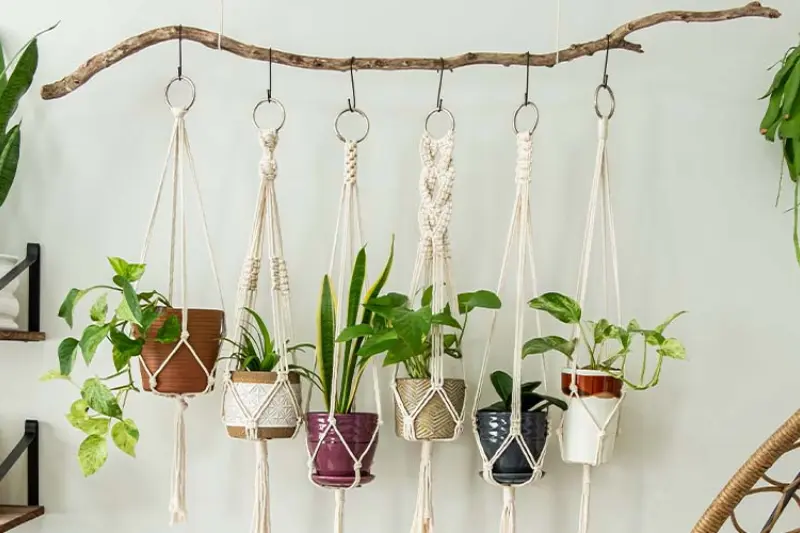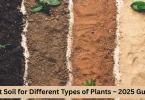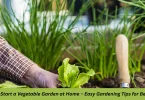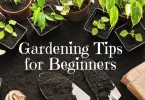Introduction:
If you love adding a touch of green to your home, you probably know how important a good plant stand can be. It not only gives your plants a proper place to shine but also adds charm to your space. The best part? You don’t have to spend a lot of money to get one! With some creativity and basic tools, you can make your own beautiful and unique plant holders right at home.
In this blog post, we’re sharing some fun and easy DIY plant stand ideas that you can try today. Whether you’re a beginner or a DIY pro, there’s something here for everyone. Let’s get started and give your plant babies the stylish homes they deserve.
What is “DIY Plant Stand Ideas”?

DIY plant stand ideas are creative and budget-friendly ways to build your own stands or holders for indoor or outdoor plants using simple materials and tools. “DIY” stands for “Do It Yourself,” which means you make it on your own—no need to buy expensive store-bought stands.
These ideas can include using wood, metal pipes, crates, ladders, or even recycled items like old stools or baskets. The goal is to create something that fits your style, space, and plant needs. Whether you want something modern, rustic, or minimal, there’s a DIY plant stand project out there for you.
You May Also Like It:
How to Protect Trees During Storms – Essential Tips for Tree Safety
How to Spot Overwatering vs Underwatering: Key Plant Care Signs
Plant Nutrition & Fertilizer Guide | Essential Tips for Healthy Growth
Why DIY Plant Stand Ideas Are Important
Creating your own plant stands isn’t just a fun weekend activity—it brings real value to your home, budget, and creativity. Here’s why DIY plant stand ideas matter:
Enhances Home Decor
Adds a Personal Touch
DIY stands reflect your own style and creativity, making your home feel more personalized. Custom designs add warmth and character that store-bought pieces often lack.
Creates Visual Balance
Plant stands help vary the height of your plants, creating a more balanced and styled look. This adds depth and interest to your space.
Fills Empty Spaces Beautifully
A well-placed plant stand can brighten up dull corners or bare walls. It turns unused areas into cozy, green highlights of your home.
Saves Money
Uses Affordable or Recycled Materials
Many DIY projects use things you already have, like old wood, crates, or stools. This helps keep costs low while promoting reuse.
Avoids Expensive Store Prices
Buying stylish plant stands from stores can be pricey, but DIY versions can achieve a similar look for much less money.
One Project, Many Uses
Once you learn a basic stand design, you can easily build more in different sizes or finishes. This saves money on future plant displays too.
Boosts Creativity and Joy
Fun and Relaxing Hobby
DIY projects are a great way to unwind and do something hands-on. They bring a sense of calm and joy after a busy day.
Encourages Creative Thinking
Choosing how to build and decorate your stand helps you explore new ideas. It’s a creative process that feels both fun and rewarding.
Gives a Sense of Accomplishment
Finishing a DIY project and using it in your home feels very satisfying. Seeing your plants on a stand you made brings daily joy and pride.
Step-by-Step Guide: DIY Plant Stand Ideas

Making your own plant stand might sound challenging, but it’s easier than you think. Follow these simple steps to design, build, and enjoy your very own custom plant stand.
Step 1: Decide on the Type of Plant Stand
- Think about where you’ll place the stand—indoor or outdoor, corner or center of a room.
- Choose a design that suits your space and style: ladder stand, crate stack, hanging shelf, or modern wood and metal combo.
Step 2: Measure Your Space and Plant Pots
- Measure the area where the stand will go so it fits perfectly.
- Check the size and number of plant pots you want to display—this helps decide shelf width, height, and spacing.
Step 3: Gather Your Materials and Tools
Common materials:
- Wooden boards or crates
- Metal pipes or copper tubing
- Screws, nails, wood glue
- Paint or wood stain
Tools you may need:
- Measuring tape
- Handsaw or electric saw
- Drill or screwdriver
- Sandpaper or electric sander
Step 4: Sketch Your Design (Optional but Helpful)
- Draw a simple sketch or use free online tools to visualize your stand.
- Mark dimensions and shelf placements to guide your building process.
Step 5: Cut and Prepare the Materials
- Use your measurements to cut wood or pipes to size.
- Sand the wood pieces to remove rough edges and splinters.
- Wipe everything down to remove dust before assembly.
Step 6: Assemble the Plant Stand
- Begin by building the base, then work your way up.
- Use screws, nails, or strong adhesive (like wood glue or epoxy) to secure pieces.
- Double-check balance and stability after assembly.
Step 7: Paint, Stain, or Seal (Optional)
- Customize your stand by painting it with bold colors or staining it for a natural wood finish.
- If the stand will be outdoors, apply a waterproof sealant to protect it from weather.
Step 8: Let It Dry and Set
- Allow glue, paint, or sealant to dry completely—this usually takes a few hours.
- Make sure the structure feels solid and stable before placing any plants on it.
Step 9: Style and Place Your Plants
- Arrange your plants on the stand, mixing tall and short ones for a nice visual flow.
- Add accessories like pebbles, plant labels, or small lights for extra charm.
Step 10: Enjoy Your DIY Creation
- Step back and admire your handiwork!
- You’ve created a functional, beautiful piece that enhances your space and gives your plants a stylish home.
Advantages and Disadvantages of DIY Plant Stand Ideas
Building your own plant stand can be a rewarding experience, but like any project, it comes with both pros and cons. Here’s what you should know:
| Advantages of DIY Plant Stand Ideas | Disadvantages of DIY Plant Stand Ideas |
| Budget-Friendly You can build a stylish plant stand at a much lower cost than buying one from a store. Many projects use affordable or recycled materials. | Time-Consuming Even simple projects can take several hours or more, especially if you’re new to DIY or working with limited tools. |
| Fully Customizable DIY lets you choose the size, shape, color, and design that fits your space and style. You get a stand that’s 100% unique to you. | Requires Tools and Materials You’ll need access to tools like a saw, drill, or sander. Not everyone has these at home, and buying them adds to the cost. |
| Eco-Friendly By reusing old furniture, wood, or crates, you’re reducing waste and giving new life to unused items. | Possible Learning Curve If you’re a beginner, you may face challenges with measurements, cutting, or assembling. It may take trial and error to get it right. |
| A Fun and Creative Project DIY is a great way to express creativity. It can also be a relaxing, hands-on activity that brings joy and satisfaction. | Risk of Poor Stability Improper construction can lead to a wobbly or unsafe stand. This might be risky for your plants or your floor. |
| Fits Any Space Perfectly You can design the stand to match any corner, balcony, or shelf area—especially helpful for small apartments or oddly-shaped spaces. | Limited by Skill Level More complex designs may be difficult without woodworking or crafting experience. Simpler stands may not achieve the exact look you want. |
You May Also Like It:
Common Tree Diseases and Effective Treatment Methods – Tree Care Guide
Best Time to Trim Trees – Seasonal Guide for Healthy Growth
How to Keep Indoor Plants Healthy | Essential Tips for Thriving Houseplants
Common FAQs About DIY Plant Stand Ideas
What is a DIY plant stand?
A DIY plant stand is a plant holder or display that you make yourself at home using simple tools and materials. It can be made from wood, crates, pipes, or even old furniture.
Do I need to be good at building things to try this?
Not at all! Many DIY plant stands are beginner-friendly. Start with simple designs like stacking crates or using a stool, then try more advanced styles as you get confident.
What tools do I need to make a plant stand?
Basic tools like a saw, drill, measuring tape, screwdriver, and sandpaper are usually enough. Some projects don’t even need tools—just glue and creativity!
Can I make a plant stand using items I already have at home?
Yes! You can upcycle things like wooden crates, old chairs, small ladders, or stools. A fresh coat of paint or stain can turn them into beautiful plant stands.
How long does it take to build a plant stand?
It depends on the design, but many simple stands can be finished in 1–2 hours. More detailed ones might take a full afternoon or weekend.
Can I use a DIY plant stand outdoors?
Yes, but make sure to seal or paint it with weather-resistant products so it doesn’t get damaged by rain or sunlight.
Is making a DIY plant stand cheaper than buying one?
Most of the time, yes. You can save money by using leftover materials or low-cost supplies from local hardware or craft stores.
Conclusion
DIY plant stand ideas are a fun and affordable way to show off your plants and add style to your home. Whether you’re a beginner or love crafting, making your own stand lets you create something unique that fits your space perfectly. Plus, it’s a great way to be creative and enjoy your plants even more. So, grab some materials, try one of these ideas, and watch your plants shine in their new home.
Bonus Points for DIY Plant Stand Ideas
- Use Non-Toxic Paints and Finishes
When painting or sealing your plant stand, choose non-toxic, plant-safe products to keep your plants healthy and safe. - Add Wheels for Mobility
Attach small caster wheels to the bottom of your stand to easily move plants around for better sunlight or cleaning. - Incorporate Storage
Design your stand with extra shelves or compartments to store gardening tools, pots, or plant care items. - Mix Materials for a Unique Look
Combine wood, metal, and rope to create stands with different textures and styles that stand out. - Personalize with Accessories
Decorate your plant stand with small lights, plant labels, or decorative stones to make it even more special.
You May Also Like It:
Tree Pruning Tips for Beginners – Easy Guide to Healthier Trees
Why Your Plant Leaves Are Turning Yellow | Common Causes & Easy Fixes
Natural Remedies for Plant Pests | Eco-Friendly Pest Control Tips 2025
How to Care for Trees in Your Backyard – Tree Maintenance Tips 2025







